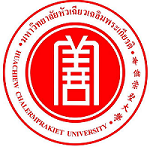Please use this identifier to cite or link to this item:
https://has.hcu.ac.th/jspui/handle/123456789/3734| Title: | Comparison of Extraction Techniques for 1'-Acetoxychavicol Acetate from Dried Alpinia galanga (L.) Willd. Rhizomes |
| Authors: | Chanchai Sardseangjun Nitikan Thipunkaew ชาญชัย สาดแสงจันทร์ นิติกานต์ ธิปันแก้ว Huachiew Chalermprakiet University. Faculty of Pharmaceutical Sciences Huachiew Chalermprakiet University. Faculty of Pharmaceutical Sciences |
| Keywords: | Alpinia galanga ข่า Plant extracts สารสกัดจากพืช 1′-acetoxychavicol acetate 1' อะเซทอกซีชาวิคอลอะซิเตต High Performance Thin Layer Chromatography ไฮเปอร์ฟอร์แมนซ์ทินเลเยอร์โครมาโทกราฟี galangal rhizome powder สารสกัดข่าชนิดผง |
| Issue Date: | 2024 |
| Citation: | Journal of Food Health and Bioenvironmental Science (May - August 2024), 17(2): 44-55 |
| Abstract: | Alpinia galanga (L.) Willd., a member of the Zingiberaceae family, contains various biologically active compounds. Among these, 1'-acetoxychavicol acetate (ACA) is a major volatile component in the galangal rhizome, exhibiting numerous pharmacological properties. Notably, ACA is absent in galangal essential oil obtained through steam distillation. This study aimed to determine the best extraction technique for ACA from galangal rhizome powder (GRP). GRP was subjected to four extraction techniques (maceration extraction (ME), ultrasonic-assisted extraction (UAE), reflux extraction (RE) and Soxhlet extraction (SE) and the resulting crude extracts (CEs) were analyzed for ACA content using high-performance thin-layer chromatography (HPTLC). The ACA content was expressed as a percentage of weight per CE and GRP. The study found that the extraction technique significantly influenced the yield of CEs and the quantity of ACA per CE and GRP. The SE technique yielded the highest amount of CEs (19.15 ± 0.66%). However, the RE technique provided the highest ACA content per CE (41.77 ± 4.58%) and per GRP (3.79 ± 0.57%), even though it did not yield the highest CE (9.05 ± 0.44%). The technique that produced the highest CEs resulted in more impurities than the technique that yielded the highest ACA content. Therefore, it was concluded that RE is the best technique to achieve the highest percentage of ACA per CE and per GRP. |
| Description: | สามารถเข้าถึงบทความฉบับเต็ม (Full Text) ได้ที่ : https://li01.tci-thaijo.org/index.php/sdust/article/view/263546/179086 |
| URI: | https://has.hcu.ac.th/jspui/handle/123456789/3734 |
| Appears in Collections: | Pharmaceutical Sciences - Artical Journals |
Files in This Item:
| File | Description | Size | Format | |
|---|---|---|---|---|
| Comparison-of-Extraction-Techniques-for-1'-Acetoxychavicol-Acetate.pdf | 61.12 kB | Adobe PDF | View/Open |
Items in DSpace are protected by copyright, with all rights reserved, unless otherwise indicated.
